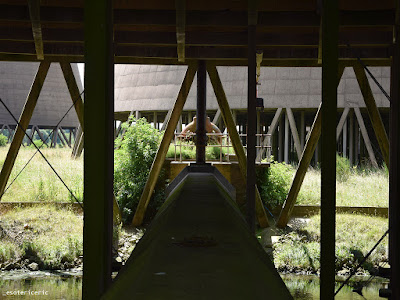History
The St James' Street Baths was officially opened on 9 June 1932. It was built on a site formerly occupied by the Christ Church Schools, and was designed by the Borough Estates Surveyor, Mr R E Ford, assisted by Mr F D Whiteley and Mr H J Ward. It cost £10,000 to build and equip and the general contractors were Messrs Walter Firth Ltd of Doncaster.The building contained swimming, slipper, Turkish and Russian baths. The pool was the first public swimming bath in England to be fitted with underwater lighting through the provision of twenty-four powerful electric lights along the sides of the pool. The intention was to prevent unperceived accidents, and coloured screens could be placed in front of the lights to give coloured effects. The pool water was filtered by plant supplied by Paterson Engineering Co Ltd of London, and the whole of the water in the pool could be withdrawn, warmed, aerated, chemically treated, and returned to the pool once every four hours, ensuring that the water would be bacteriologically and chemically pure during the whole of the bathing season. The opening ceremony booklet noted that 'unlike most other swimming baths, there are no dressing rooms round the swimming pool itself, but these are provided in two large rooms adjoining the bath hall'. The slipper baths were divided into first-class and second-class baths separated for men and women. There was also a laundry fully equipped with the latest machinery, and a kitchen to provide food for the bathers.
The Turkish baths were situated in the basement, and consisted of a lounge or cooling room, three hot rooms, a masseur's room, and a Russian steam bath. Adjoining the Turkish baths suite was a Sun Ray room, where 'the Public can enjoy the health giving properties of Sun Ray lamps, even during the dullest weather..'.
During winter months the pool was floored over with a sprung maple floor and the swimming hall was available for concerts, dances, and other entertainment, with accommodation for approximately 1,500 people. There was a stage at one end, and a cinematographic projection box for films. The building was subsequently used as a venue by many performers, including the Beatles in the early 1960s, when they are said to have honoured a fee of £40, although by the time they actually performed they were being paid £200 per performance elsewhere.
In 1951 the Borough Surveyor drew up plans for a proposed extension attached to the south-east wall of the original building and would have included a second pool, Turkish baths, and café. It was not, however, built and the original baths remain largely as built in 1932. Alterations which have taken place include the up-dating of the pool filtration system and boiler along with their relocation to the basement, alteration of the kitchen to a store, the laundry to an aerobics studio, the slipper baths to gym rooms, and the refurbishment of the changing rooms. The pool is no longer floored over in winter.
The building is now known as St James' Pool and Health Club.
Source:
https://historicengland.org.uk/listing/the-list/list-entry/1403445
Esoteric Eric





























